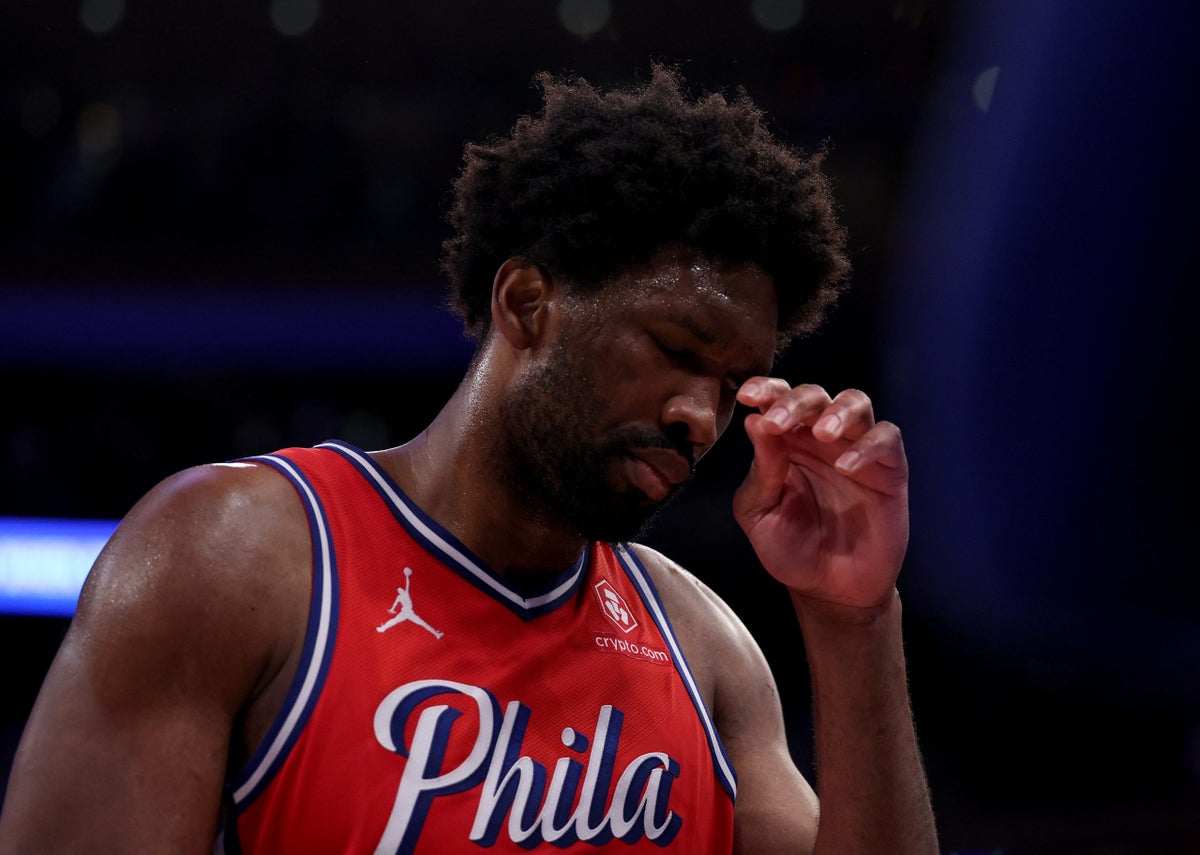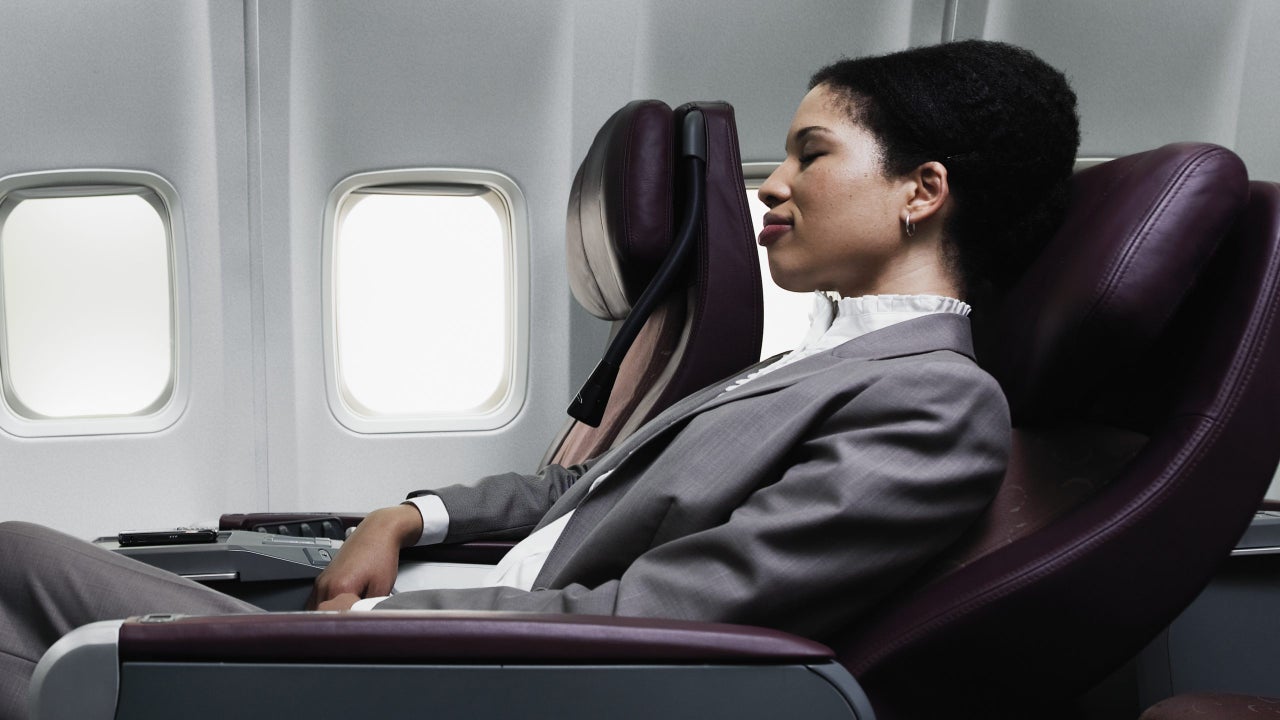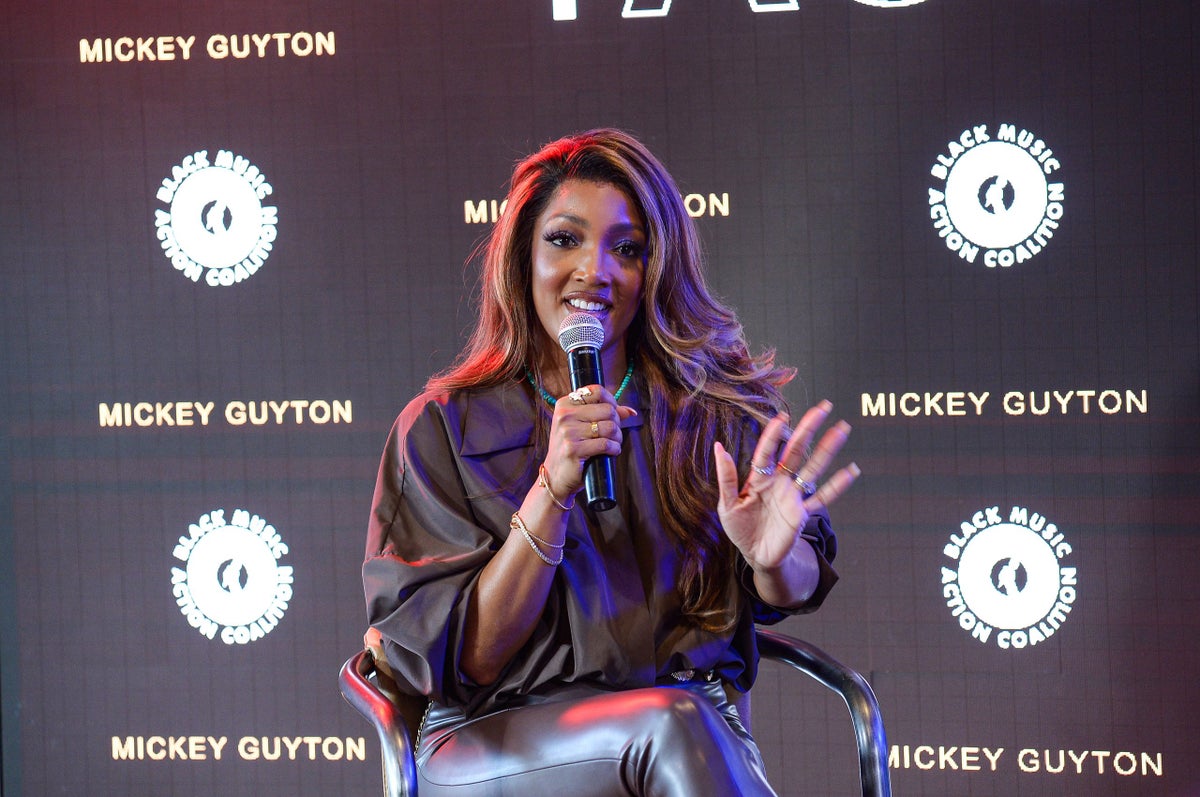
If you’ve been paying attention to the NBA lately (because some of us gals, meaning myself, do), then you know the playoffs recently kicked off. The games are intense, especially the current matchup of the Philadelphia 76ers versus the New York Knicks.
The 76ers’ biggest star, center Joel Embiid, scored 50 points in Game 3, but much of the chatter about his performance focused on his eye. The all-star had difficulty blinking and even closing his left eye when cameras zoomed in on him, including at the free throw line, leaving people on Twitter wondering what was happening to him.
So when Embiid took to the podium at the post-game conference on Thursday night, he revealed that he’d been diagnosed with Bell’s palsy. The condition causes weakness in the muscles on one side of a person’s face, including difficulty blinking and droopiness of the mouth.
I don’t know exactly what happened, but obviously, I guess that’s a normal thing,” he said, wearing sunglasses while at the microphone. Embiid started to experience migraine headaches that he thought were “nothing,” but things progressively got worse. “I ended up having to tell somebody.”
“My body, I was just not feeling it and obviously lately, if you Google the symptoms, you know what it is. It’s pretty annoying,” he added. “The left side of my face, my mouth, and my eye, it’s been tough. It’s unfortunate; that’s the way I look at it, but that’s not an excuse. You’ve got to keep pushing.”
Embiid has experienced fractures of both his left and right orbital bone over the last few years, but that isn’t what’s behind a condition of this magnitude.
Here are five fast facts about Bell’s palsy:
- Bell’s palsy is an unexplained facial paralysis or weakness; hence, Embiid noting that he didn’t know what occurred to cause it. It can affect anyone, regardless of age or gender, though the National Institute of Neurological Disorders and Strokes says it commonly affects those 15 to 45. Embiid is 30. It can be connected to a viral infection, though, including chickenpox, cold sores, respiratory illness, the flu, and more.
- The condition begins with damage to the facial nerve, and symptoms include headache, tearing, inability to close the eye, the inability to control muscle movements of the face, including blinking and smiling, and even a possible loss of taste and sensitivity to sound.
- Though the symptoms can be very difficult to deal with, Bell’s palsy is considered a temporary issue for most people who have it. Symptoms can improve within a few weeks, sometimes around six months. It is very rare to have the symptoms on both sides of the face or for the rest of one’s life.
- While Embiid initially tried to shrug off symptoms as “nothing,” experts say that first indications of something like Bell’s palsy must be taken seriously to ensure that it’s not actually the sign of a stroke or multiple sclerosis, as these conditions share similar symptoms.
- In addition to keeping an eye that won’t close covered (by sunglasses, like Embiid, or through regular glasses or an eye patch), lubrication is important. Overall treatment methods may include the use of steroids, antiviral medicine, pain medications, and sometimes physical therapy to help get the facial nerve back to its normal state.
While it’s “unfortunate,” as Embiid remarked, that he’s dealing with Bell’s palsy at a time when he’s focused on trying to take his team to a championship, he has offered some education to people about this condition, which affects around 40,000 people a year in the United States. Embiid isn’t looking for sympathy. He’s ready to prepare for Game 4 and to move forward in the efforts to claim his first title.
“I’m not a quitter,” Embiid said. “You’ve got to keep fighting through anything.”







